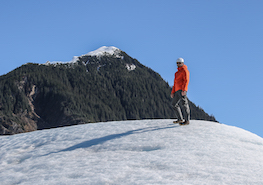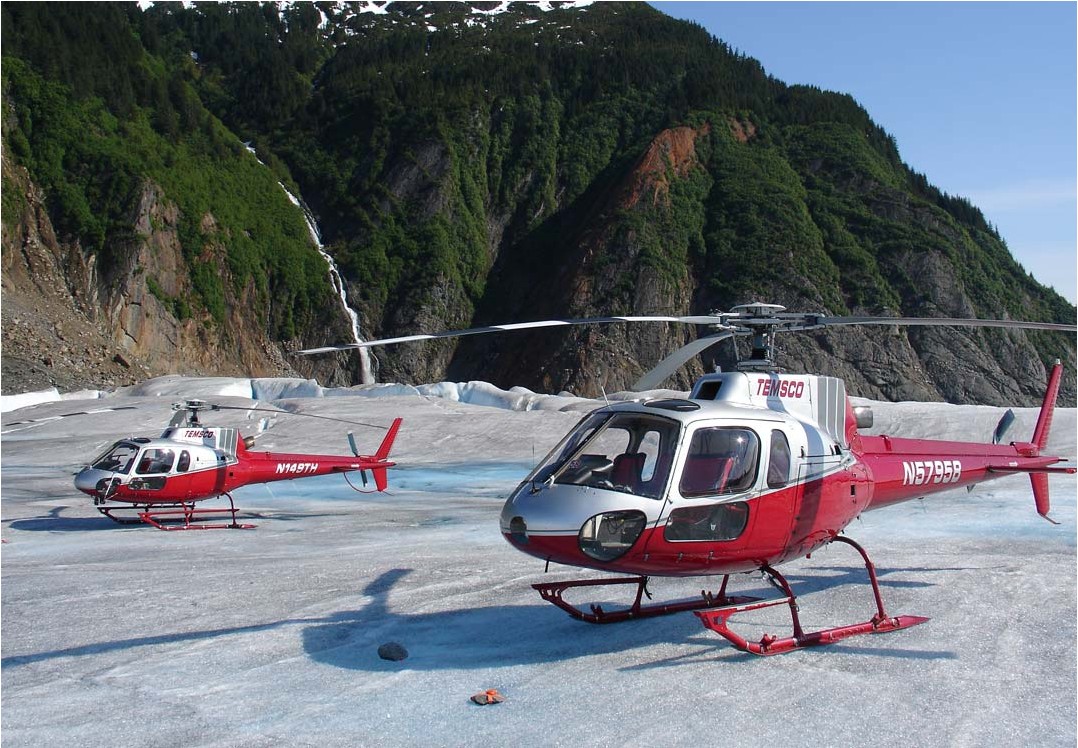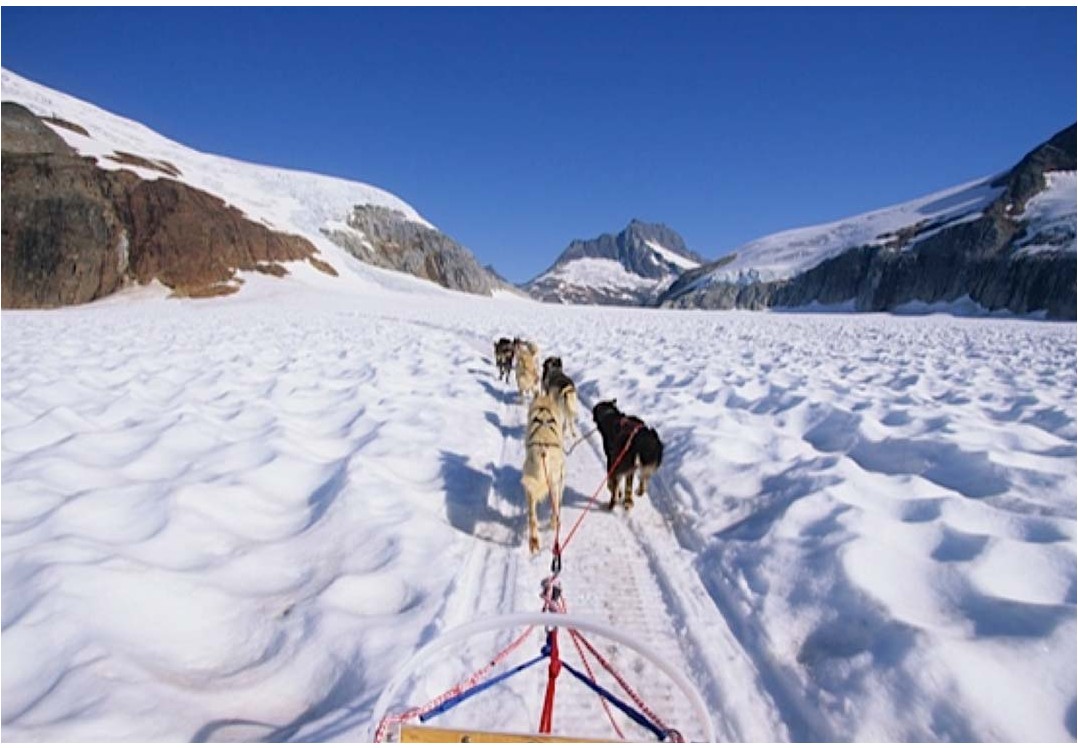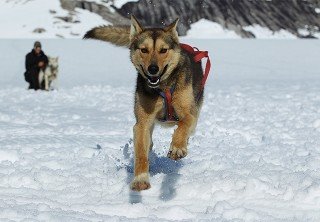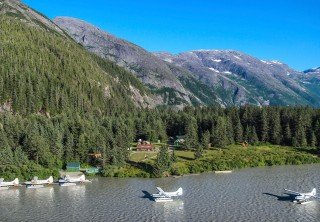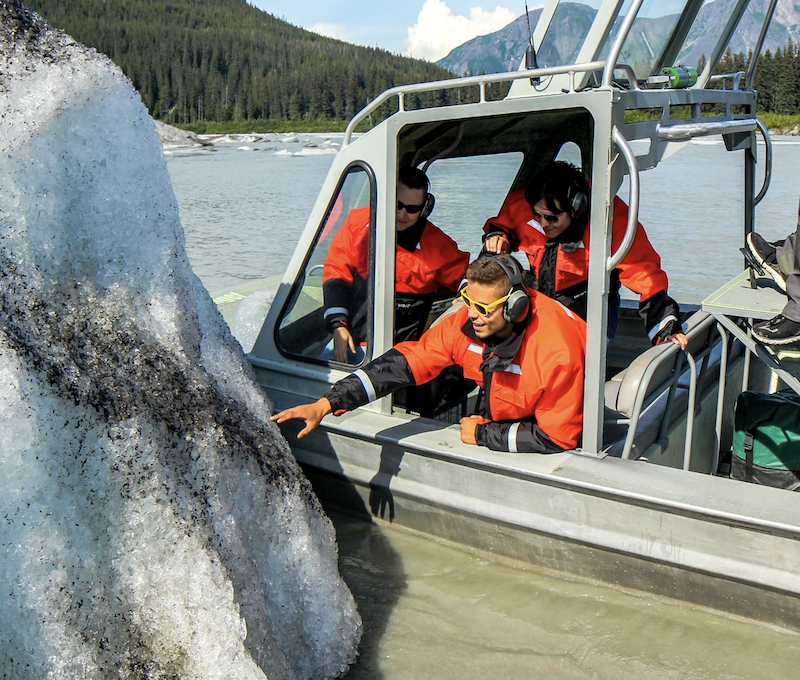Last Updated: Nov 09, 2024
Alaska is known for its incredible glaciers, and Taku Glacier, just southeast of Juneau, is one of the most researched and impressive of them all. Holding records for being the deepest, thickest alpine temperate glacier in the world, it comes in at 4,845 feet thick and extends about 36 miles from its origination in the Juneau Icefield.
About the Taku Glacier
Considered a large glacier, even by Alaska’s standards, Taku Glacier is one of the southernmost tidewater glaciers in the northern hemisphere—and the largest of the Juneau Icefield. While other glaciers across the state have been retreating due to warming global temperatures, the Taku Glacier has fascinated researchers by continuing to advance as others have melted away.
Unfortunately, in 2019, it was announced the Taku Glacier was officially in retreat with the rest of Alaska’s glaciers.
Geography of Taku Glacier
As a tidewater glacier, Taku Glacier has advanced over time to block the Taku River then retreated—only to restart its advance again. This is due to its positive mass balance. Snow piles up on the glacier faster than the ice and snow melt, and the grounded terminus of the glacier means it doesn’t lose mass from icebergs calving into the water below.
While all of the other glaciers of Alaska have seen marked recession with climate change, Taku Glacier appeared unaffected—until 2019. NASA photos released that year showed the massive glacier retreating for the first time since studies on it began back in 1946.
Interesting Facts
The Taku Glacier is more than just one of the most stunning natural sights in Alaska—it’s an essential part of the puzzle for understanding global warming and climate change. Visitors here have the opportunity to stand on the precipice of a global shift, making Taku Glacier as fascinating as it is beautiful.
- Taku Glacier was named Schultze Glacier in 1883, and renamed Foster Glacier in 1890. However, the local Tlingit name of “Taku” is the name that eventually stuck.
- The ferry M/V Taku of the Alaska Marine Highway System is named after Taku Glacier.
- Every year, glaciers across the globe lose up to 390 billion tons of ice and snow, but mountain glaciers only account for less than 1% of the ice volume of Earth’s glaciers.
- The Juneau Icefield is larger than Rhode Island by one-third, and it covers 1,500 square miles.
- The last time Taku Glacier began advancing was around 1750, and it had advanced a total of 4.82 miles—bringing it within .78 miles of Taku Point—since 1890.
Visiting Taku Glacier
There’s no road to drive up to Taku Glacier, so visiting this amazing site takes some planning. The Taku Glacier Lodge offers a comfortable place to stay for sightseers, and as a fly-in location, it’s open during the peak summer tourist months of May through September.
Visiting Taku Glacier is an experience you won’t soon forget, and travelers here can spend the day taking a flight over the Juneau Ice Field glaciers and end the evening eating grilled wild Alaskan Salmon at the Taku Glacier Lodge. Whether adventure or incredible scenery is your goal, you’ll find exactly what you’re looking for at Taku Glacier.

 Mendenhall Glacier
Mendenhall Glacier Whale Watching
Whale Watching Dog Sledding
Dog Sledding Salmon Bake
Salmon Bake Helicopter
Helicopter Kid-Friendly
Kid-Friendly Kayak
Kayak Adventure
Adventure Train
Train Yukon
Yukon Rafting
Rafting Misty Fjords National Monument
Misty Fjords National Monument Boat
Boat Fishing
Fishing Bear & Wildlife
Bear & Wildlife Animal & Wildlife
Animal & Wildlife